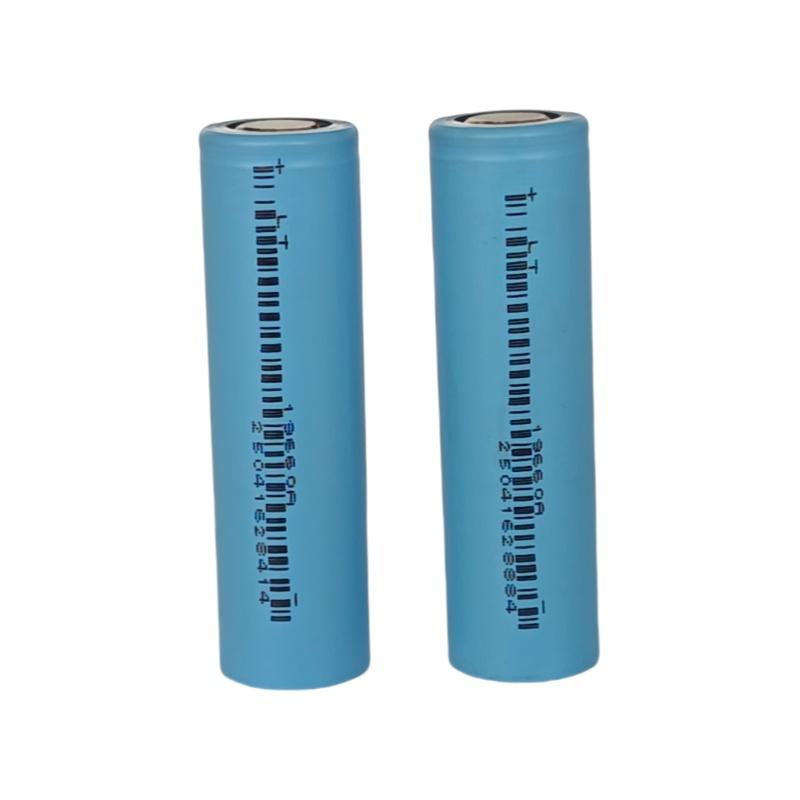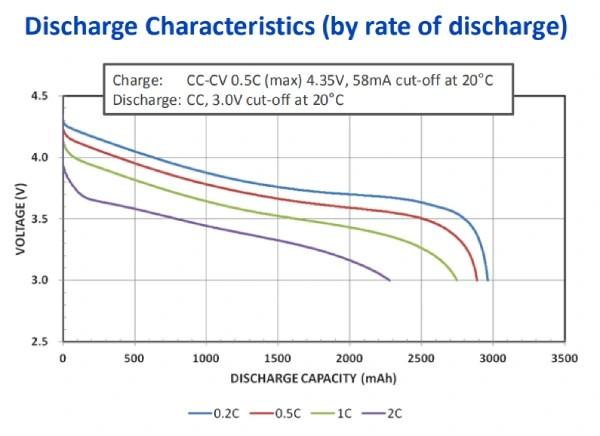
From flashlights and laptops to electric vehicles and solar energy storage systems, the 18650 battery is a cornerstone of portable power. Its performance hinges on one key metric: capacity. Understanding what 18650 capacity means, how it's measured, and its real-world maximum is crucial for making informed choices and avoiding counterfeit products. This guide provides a comprehensive breakdown of 18650 battery capacity and reveals the state of the technology in 2025.
The capacity of an 18650 battery refers to the total amount of electrical energy it can store, typically measured in milliamp-hours (mAh). This unit directly indicates how long the battery can power a device before needing a recharge.
Think of mAh as the size of the battery's "fuel tank." A larger tank (a higher mAh value) translates to longer "run time."
mAh in Practice: An Example
A 3500mAh 18650 battery can theoretically:
Deliver 3500 milliamps (3.5A) of current for 1 hour.
Deliver 1750 milliamps (1.75A) for 2 hours.
Deliver 500 milliamps (0.5A) for 7 hours.
It's important to note that real-world performance often differs from theory due to factors like discharge rate and temperature. High-drain devices can reduce a battery's effective capacity.
Never rely solely on vague labels or exaggerated marketing claims. To know the true capacity of your 18650 cell, you need to test it yourself. The most reliable method uses a dedicated battery capacity tester, which is more accurate than using just a multimeter.
1. Safety First & Confirm Model: Ensure you are handling a genuine 18650 lithium-ion battery. Work in a safe, non-flammable environment and consider using a protective battery case.
2. Fully Charge the Battery: Place the battery in a quality lithium-ion charger and charge it to its maximum voltage, typically 4.2V for most types.
3. Use a Dedicated Capacity Tester: These affordable devices are designed for this purpose. Connect the battery to the tester.
4. Set Discharge Parameters: Configure the tester to discharge the battery at a standard rate (often 0.5C, e.g., 1.75A for a 3500mAh battery) down to the standard cut-off voltage (usually 2.5V - 3.0V to prevent damage).
5. Run the Test & Record Results: The tester will automatically complete the discharge cycle and display the actual capacity in mAh. Compare this result with the manufacturer's specifications to assess the battery's health.
The 18650 form factor (size: 18mm x 65mm) encompasses various battery types. Different internal chemistries yield vastly different performance characteristics, directly impacting capacity.

Common 18650 Chemistries and Their Capacities:
Lithium Cobalt Oxide (LiCoO₂ / LCO): Offers the highest energy density, with capacities typically ranging from 2000mAh to 3600mAh. Ideal for low-drain devices like laptops and flashlights, but has lower thermal stability. (e.g., Panasonic NCR18650B, LG MJ1).
Lithium Manganese Oxide (LiMn₂O₄ / LMO): Prioritizes power and safety over pure capacity, with typical ratings of 1500–2200 mAh. Suited for high-drain applications like power tools. (e.g., Sony VTC series).
Lithium Nickel Manganese Cobalt Oxide (LiNiMnCoO₂ / NMC): A balanced choice. Provides good capacity (2500–3500 mAh), strong discharge rates, and decent lifespan. Common in e-bikes, EVs, and power tools. (e.g., Samsung 25R, LG HG2).
Lithium Iron Phosphate (LiFePO₄ / LFP): The safety champion. Has lower capacity (1200–1500 mAh) and a different nominal voltage (3.2V), but offers extremely long cycle life (2000+ cycles) and excellent thermal stability. Ideal for solar storage and critical applications.
Lithium Nickel Cobalt Aluminum Oxide (LiNiCoAlO₂ / NCA): Similar to NMC, it offers very high capacity (3000–3600 mAh) and is used in premium applications like Tesla vehicles. (e.g., Panasonic NCR18650GA).
The choice between a high-capacity or standard/high-power cell depends entirely on your application.
High-Capacity 18650 Batteries (e.g., 3500mAh)
Pros: Maximizes run time for moderate-drain devices; ideal for flashlights, vaping mods, and portable electronics where longevity is key.
Cons: Typically have a lower Continuous Discharge Rating (CDR); unsuitable for high-drain devices; often more expensive.
High-Power 18650 Batteries (e.g., 2500mAh)
Pros: Designed to deliver high current (e.g., 20A-30A CDR); essential for power tools, high-performance vapes, and drones; often more robust.
Cons: Shorter run time per charge; not suitable for devices where efficiency is prioritized over power.
You must ensure the battery's CDR meets your device's power demands. Using a high-capacity, low-CDR battery in a high-drain device is dangerous and can lead to overheating.
This is a key question for many users. As of mid-2025, the practical maximum capacity for a mass-produced, commercially available 18650 battery is 3600mAh.
Cells like the Panasonic NCR18650G, LG M36, and Samsung 36G have achieved this benchmark. This represents the current peak of the trade-off between energy density and stability within the standard 3.6V/4.2V li-ion framework.
Any seller claiming capacities significantly above 3600mAh (e.g., 4000mAh, 5000mAh, or even 9800mAh) is selling counterfeit or dangerously mislabeled batteries. With current technology, such numbers are impossible and are a clear sign of fraud. Similarly, be skeptical of any cell claiming to have both ultra-high capacity (e.g., above 3600mAh) and an extremely high CDR (e.g., above 30A)—you typically must choose between capacity and power.
The leaders in the capacity race are the major Korean and Japanese manufacturers. Here are the top three contenders in pure energy density:
1. Panasonic NCR18650G: The long-standing benchmark. Offers a genuine 3600mAh capacity but with a moderate CDR of 4.87A. The king of runtime for low-to-moderate drain devices.
2. LG INR18650-M36 (M36): Matches Panasonic's capacity (3600mAh) but offers a higher CDR of 10A, providing a better balance of capacity and power for more demanding devices.
3. Samsung INR18650-36G (36G): Another excellent 3600mAh cell with a 10A CDR, competing directly with the LG M36 and offering great all-around performance for users seeking maximum run time.
Will a higher capacity 18650 battery last longer per charge?
Yes, absolutely. A higher mAh rating directly translates to longer runtime, provided the device's power draw is within the battery's discharge capability.
Can I replace a low-capacity battery with a higher-capacity one?
In most cases, yes, as long as the physical size is the same, the chemistry is compatible (e.g., both are standard 3.7V), and the new battery's CDR meets or exceeds the device's requirements.
Are there safety risks with using high-capacity 18650 batteries?
They carry the same risks as any other lithium-ion battery. Physical damage, overcharging, and short circuits must be avoided. Always purchase from reputable brands and suppliers.
How many charge cycles can a high-capacity 18650 battery handle?
A quality high-capacity cell from a major brand can typically endure 300 to 500 full charge-discharge cycles before its capacity degrades to about 80% of its original value.
Do 4000mAh 18650 batteries exist?
No, not as standard commercial products. While prototype cells may exist in labs, as of 2025, a reliable 4000mAh 18650 battery is not available on the consumer market. Any product claiming this capacity is fraudulent.
While the pursuit of higher energy density continues, 3600mAh remains the pinnacle of reliable 18650 battery technology in 2025. By understanding capacity, chemistries, and your device's needs, you can navigate the market effectively, avoid dangerous counterfeits, and safely select the optimal power source for your projects.
Next:BYD Energy Storage Unveils Breakthrough Haohan at the 2025 International Digital Energy Expo
Previous:BAK Battery Debuts PRO-MAX Series at CIMAMotor 2025, Redefining E-Mobility with Safety & Economy